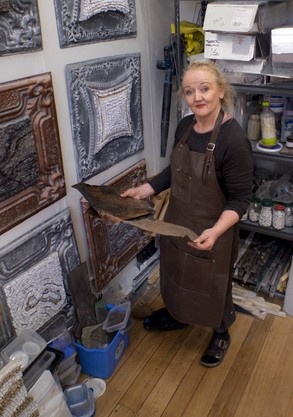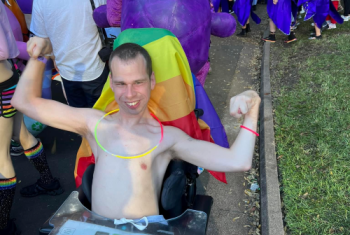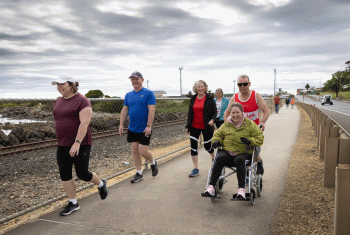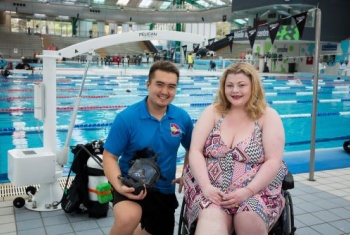Emerging artist Louise Marson’s story – represented in her first solo exhibition at a public art gallery in Melbourne – is one of loss, grief, isolation, but, perhaps most importantly, hope.
After years of living with debilitating and life-threatening depression, Louise has a new sense of purpose and identity.
“When you’re unwell with an acquired brain injury or depression, you lose your friends, you lose your employment, you lose your status, so your way of life, everything changes, you lose a lot, and that grief is really painful, and to reinvent yourself is really difficult,” Louise says.
“Through my arts practice, I have been able to express that pain and tragedy and loss, and also the journey beyond that. Creating art is central to the person I am today. I want people to know that support can make the difference – that with support, there is hope.”
Louise has been living with severe depression and an acquired brain injury for 10 years. With help from Access Arts Victoria, she joined the NDIS about three years ago – and, she says, her life and her arts practice were transformed.
“What I'm most grateful for is how the NDIS has empowered me to move from an unwell person, deeply traumatized by her mental illness and stuck, to someone where I've been supported, and where art is now my therapy,” Louise says.
“The NDIS has been really significant in my life and I just wouldn't be the person I am today without it. I feel through my art I have something to say to others about my journey.”
With NDIS-funded supports, Louise has cultivated a restorative art practice that has helped lift her from the depths of despair and isolation to an active role in her community and a life with renewed resolve and meaning.
“Before, I was immobilised, catatonic, unwell, dysfunctional, couldn’t be myself, couldn’t look after myself, a recluse that wouldn’t go out of the house,” she says.
“Now, I call myself a professional artist, I have a profession, I have moved to a person that feels whole again, a person that feels they have something to get up for in the morning.
You’ve got drive, you’ve got passion, you’ve got ambition and you feel as though you’ve got something to communicate and give back to the community through your art.
“I’m up every day, walking to my studio, doing yoga, eating healthy food, doing my art. I feel like I’m contributing.”
Louise’s first solo exhibition of mosaic art, ‘Breath’, features intricate works of textured and natural recycled stone, including marble, travertine, slate and limestone – each piece telling a part of her story.
She hopes it will help create awareness and cast a spotlight on the need for greater understanding.
“People like me, with a disability that’s not visible, we're actually everywhere, and a lot of the time, we really, really struggle to be part of the community, to be acknowledged, to be taken seriously,” she says.
“I'm really excited about the exhibition opportunity because it means my work and my story is recognized as authentic, it's real, and it is showing gratitude and appreciation to the NDIS because without the NDIS, I would be probably still be in hospital.
“We need to be educating the community about mental illness, about the impact of what it's like having a disability.”
Louise’s NDIS plan includes funding for support workers who help her in various ways, including one support worker who also acts as an art mentor.
“My support worker has helped me to successfully apply for significant grants, which are quite difficult to apply for and very competitive.
That’s made a huge difference to me,” she said.



